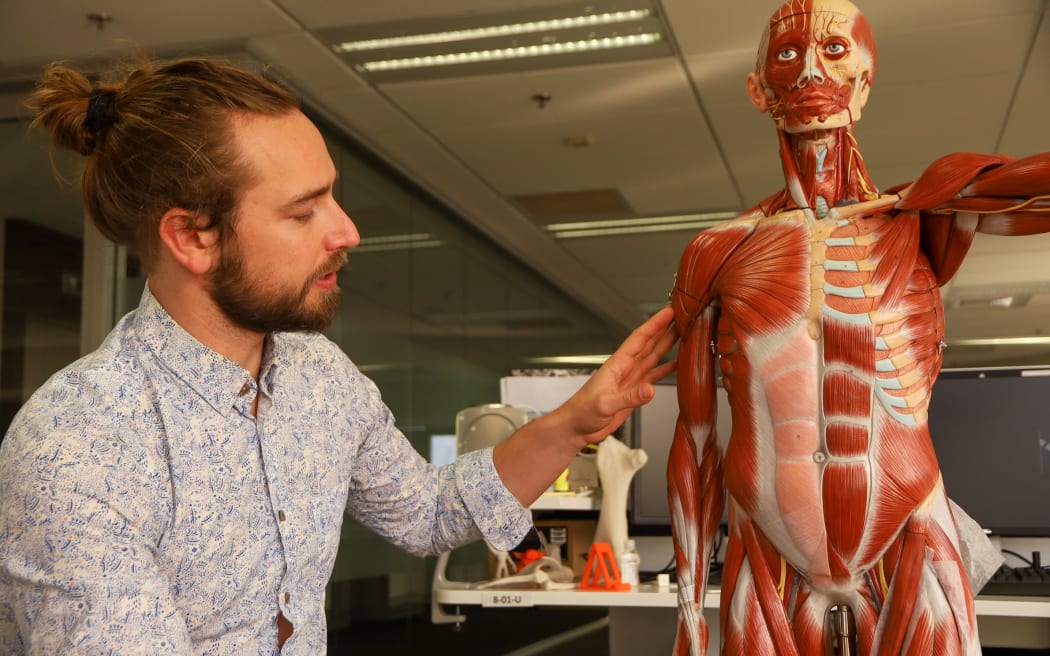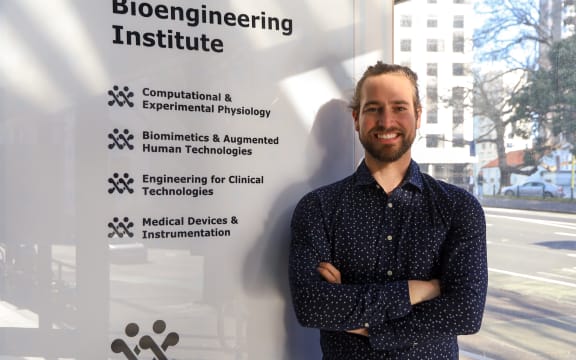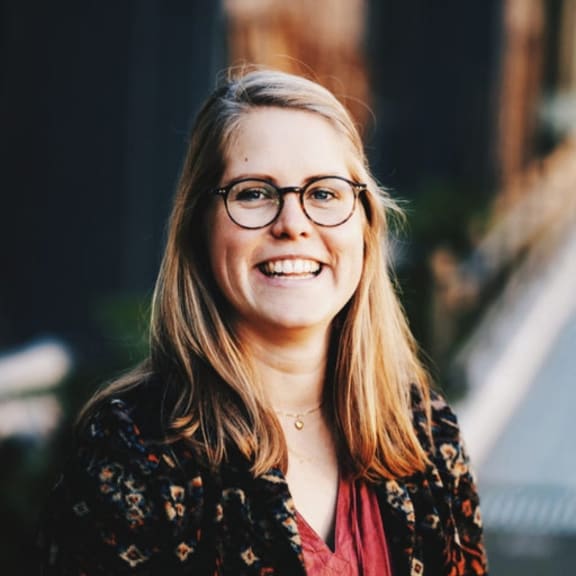'Use it or lose it!' is the rallying cry to exercise. But what happens to our muscles as we grow and as we age?

Dr Geoffrey Handsfield is part of the musculoskeletal modelling group at the Auckland Bioengineering Institute. Photo: Malila Christoffersen
Follow Our Changing World on Apple Podcasts, Spotify, Stitcher, iHeartRADIO, Google Podcasts, RadioPublic or wherever you listen to your podcasts
In this episode, Claire Concannon explores these questions.
With World Cerebral Palsy Day fast approaching, she speaks to a researcher looking at muscle development in young patients.
Plus, evidence overseas shows that former Olympic athletes live up to three years longer than the general population. A New Zealand study is investigating how former athletes' lifelong commitment to exercise is good for their bodies.
Cerebral palsy and muscle development

Dr Geoffrey Handsfield is researching how muscle symptoms develop in children with cerebral palsy. Photo: Malila Christoffersen
Cerebral palsy is the most common cause of physical disability for children in Aotearoa. It results when impairment in the developing brain either during pregnancy or shortly after birth leads to problems with movement and posture.
Dr Geoffrey Handsfield of the musculoskeletal modelling group at the Auckland Bioengineering Institute wants to understand what is happening in the muscles of children with cerebral palsy across time.
To do this, he is working with Mātai Medical Institute in Tairāwhiti on a longitudinal MRI study of children both with and without cerebral palsy.
He hopes to figure out how muscle development is impeded in those with cerebral palsy and perhaps find some clues for how to help.
Muscle changes as we age

Dr Lara Vlietstra is the project coordinator for the GAMES study, investigating why Olympic athletes live three years longer than the general population. Photo: University of Otago / Supplied
At the other end of the life spectrum, Dr Lara Vlietstra of the School of Physical Education, Sports and Exercise Science at the University of Otago is interested in what happens to our muscles as we age.
There are physiological changes that occur – while we only lose a little bit of muscle mass, the muscle fibres themselves change.
Over time, many of our Type 2, or fast-twitch, muscle fibres (related to power and speed) change to Type 1, or slow-twitch.
On top of this, communication between the nerves and the muscles gets impeded.
Reduced physical activity, along with these physiological changes, can result in loss of function in older adults, and susceptibility to falls.
Lifelong commitment to exercise
These changes are both preventable and treatable, says Lara, with – you guessed it – exercise.
While guidelines often recommend about 150 minutes per week, the key thing is a lifelong commitment that is sustainable.
One of the studies Lara is currently involved in as project coordinator is the GAMES study.
Overseas investigations have already demonstrated that Olympic athletes live up to three years longer than the general population. The GAMES study is going further, interviewing former New Zealand Olympic and Commonwealth athletes that are now over the age of 60 about their exercise history and present, and investigating their fitness and function.
While we can’t all be Olympic athletes, Lara is hoping that some of the athletes’ stories will be able to help us mere mortals develop a healthy relationship with exercise that lasts a lifetime.
To learn more:
-
Some of the physiological changes Lara describes in the episode related to nerve-to-muscle communication are being researched by her colleague, Assoicate Professor Phil Sheard. He spoke about these findings in ‘Ageing muscles – use them or lose them’.
-
Exercise also impacts our heart, our metabolism, and our brains. Listen to physiologists and ultra runners Dr Kate Thomas and Dr Joe Donnelly explain what goes on in our bodies when we run in ‘Exercise on the brain’.
-
The International Olympic Committee just published their consensus statement on RED-s – a syndrome caused by a mismatch between calories eaten and burned during exercise. Learn all about Relative Energy Deficiency in Sport by listening to ‘Running low on energy’.


